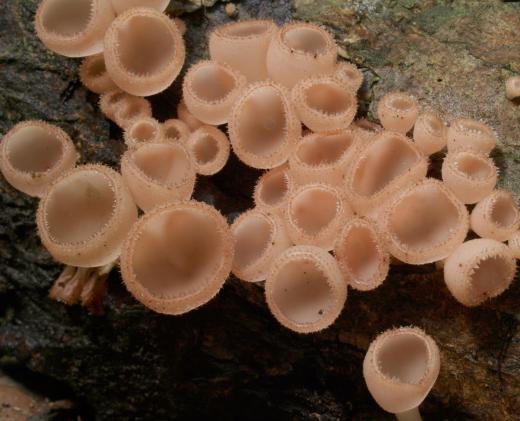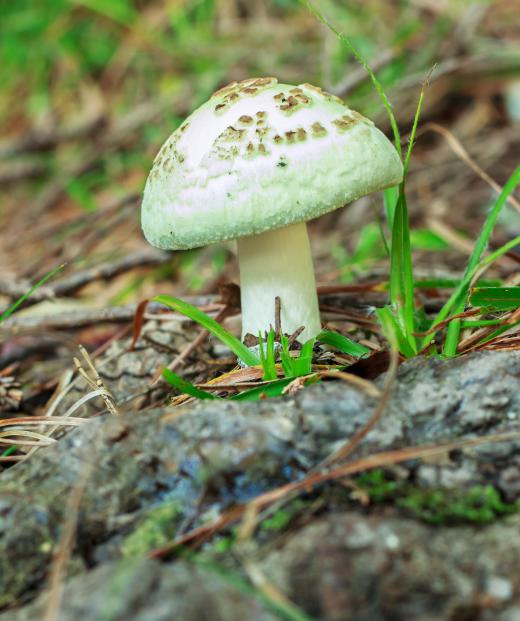What is Trichoderma?
 Mary McMahon
Mary McMahon
Trichoderma is a fungal genus found in many regions of the world. These fungi are ubiquitous in a wide variety of environments, showing up in soil, forests, wood, and paper, among other locations. Humans are primarily interested in this fungus as a beneficial symbiotic partner for plants, particularly crops, although members of this genus do have some other uses and benefits for humans. Industrial-scale cultivation of these fungi is common to several industries.
These fungi appear in the form of colonies of mold which start out transparent, turning white or yellowish over time. When the mold matures and begins producing spores, it darkens and turns green to gray. Many Trichoderma species have a distinctive sweet scent which is often compared to coconuts. The colony is fast growing, and it will typically mature within five days. Trichoderma molds tend to prefer moderate temperatures, which allows them to thrive in a variety of climates. Several species also have teleomorphs or sexually-reproducing forms in the genus Hypocrea.

One of the most important functions of Trichoderma involves the mold's tendency to develop symbiotic relationships with plants. These fungi like to grow on the roots of living plants, and they promote abundant root growth so that they have plenty of roots to grow on. Trichoderma also eliminate other fungi so that they do not have to struggle with competitors, providing a benefit to the plants they colonize. Some farmers and gardeners add Trichoderma to their soil before planting for the benefit of their plants.

Although Trichoderma are welcome partners for plants, they can be parasitic with other fungi. Mushroom farmers sometimes struggle with “green mold” infestations caused by Trichoderma, as the mold will happily colonize the fruiting bodies of many mushrooms. These molds can also be very destructive to wooden structures and paper products, as they produce an enzyme which breaks down cellulose, causing rot. Trichoderma species can also cause allergies in people with sensitivity to mold.
There are some surprising uses for molds in this genus. Several species are cultivated for the enzymes they can produce, including chitinase and cellulase. The cellulase-producing species T. reesii is used in the preparation of “stone washed” garments; the enzyme breaks down the cellulose in the cotton, softening it and giving it an aged look and feel. Using fungi instead of literal rocks is cheaper and more efficient for clothing manufacturers, and it also allows for greater control over the process.
AS FEATURED ON:
AS FEATURED ON:












Discussion Comments
@panda2006- I had heard this before, but it is still interesting. It certainly seems more practical than imagining clothing companies rubbing designer jeans against stones. It makes me wonder, too, if they could even come up with a practical use for moths or mosquitoes.
I am allergic to some types of mold, including this kind. I had no idea they had some actual practical uses, though. Who would imagine you could use a fungus to change the appearance of clothes?
Post your comments